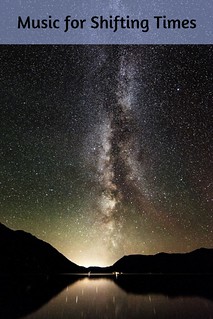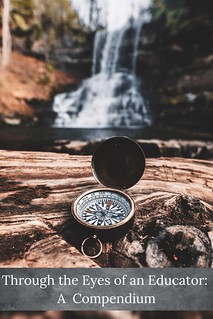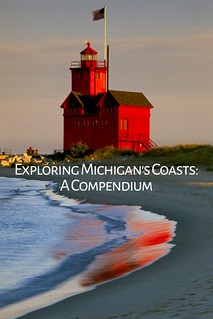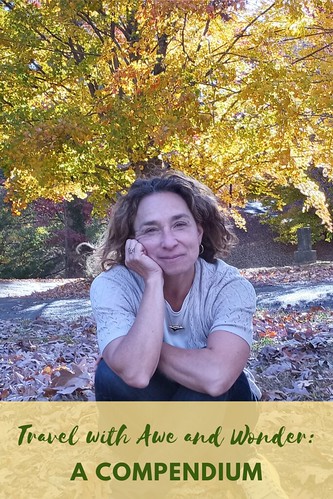Why Criminology Belongs in Travel Conversations
Why Write About Crime on a Travel Site?
After reading my last article, Why Do We Travel?, you might still be thinking, “Wait, but Cerys, what does crime have to do with travel?” I’m glad you asked. And yes, I’m sorry; I know I’ve taken my time getting here.
Let’s get to the point.

Crime might seem like an odd travel companion (unless, of course, you’re referring to the genre of the book in my aeroplane carry-on), but the two can be linked in far more ways than you may at first expect.
Criminality is defined by the social norms and values of a region, which closely tie it to the local culture. Due to this cultural relationship, we, as travellers, may bear witness to the variations in laws that exist across the globe and appreciate how they are a direct result of the societies in which they were legislated.
As travellers, we must also consider our direct interactions with crime, navigating legal variations to ensure we stay on the right side of the law, but also protecting ourselves from the criminal actions of others.
Before we explore these themes, however, I would like to flip the rhetoric and consider how criminality may also influence culture, specifically by examining its ongoing relationship with pop culture.
Crime Inspires Popular Culture
Popular culture, or pop culture as it is often known, is the umbrella term used to encompass all forms of cultural products, for example: books, theatre, or television shows, that are produced for and mass-consumed by the majority of a society. It is sometimes looked down upon as being the obvious choice, due to its mass appeal, but it provides an accurate portrayal of the attitudes, opinions and interests shared within a culture.
As I have previously stated, each nation’s definition of crime can be directly related to its social values and what it deems important, but this relationship works both ways. The influence of crime and criminality pervades our popular culture, bringing us great pieces of literature, music that we can’t stop listening to, and cinema that leaves us hanging on the edge of our seats. Many of us love to consume it, so let’s learn a little more about it.
1. Crime Fiction

Ever since Edgar Allan Poe published what is now thought of as the first modern detective story in 1841, The Murders in the Rue Morgue, readers have been enthralled by the wonders of crime fiction. Great authors such as Sir Arthur Conan Doyle and Agatha Christie followed in Poe’s footsteps, creating masterworks and iconic characters that are still adored today. Detective and wider crime fiction is such a broad genre that even my sci-fi-loving boyfriend has sat down to read a murder mystery novel, albeit with a few more aliens than I would personally like.
Crime fiction is so popular, though, that when surveyed in 2020, a third of British adults said that crime, thriller and mystery was their favourite book genre!
Our love of crime fiction doesn’t end when we put down our book, though. Crime fiction's popularity has spread far beyond the written word and onto our screens: television, cinema, a smartphone balanced on the side of the kitchen sink as you wash the dishes (is that just me?), you name it, crime fiction is there!
With dramatisations of bestselling novels and original creations, there is a never-ending supply of television and cinema of this genre to watch.
But the fun doesn’t end there.
As video games grew in popularity and became accessible to the masses, both in arcades and at home, their plots continued to diversify. Developments in gaming built up to the early 1990s and the release of violent titles such as Mortal Kombat and Doom, the game that popularised ‘first-person shooters’. Whilst at first highly controversial, and still of concern to some today, violent and crime-based games are extremely popular, and the launch of multi-billion dollar franchises such as Grand Theft Auto has helped to cement criminality as a central theme in the world of gaming.
2. True Crime
Our fascination with crime fiction has also expanded into the recent commercialisation of true crime, a phenomenon that might not be as new as it seems.
As far back as the days of the Roman Empire, people have come out to watch public executions: in the city of London, they were a fixture of everyday life from 1196 until as recently as 1868. Designed to be used as a deterrent for would-be wrongdoers, public executions were, for some time, looked upon as a form of entertainment, with vendors selling refreshments and souvenir printed ballads detailing the crimes of the condemned.
In comparison with this, the present-day obsession with true crime doesn’t seem so strange, although perhaps still a little macabre.
From the innumerable television and Netflix documentaries (I started to name some, but we all know at least one, who didn’t watch Tiger King during the pandemic…, actually, I didn’t, but I digress), to podcasts and books, there appears to be an insatiable appetite for true crime.
The ethics surrounding true crime production and consumption are at times hazy, and the romanticisation of criminals and, in particular, serial killers can be extremely unsettling, but what is it that draws people to true crime?
Some suggest that we love it in the same way that we love its fictional cousin, because true crime provides us with mystery and intrigue. Others suggest that our fascination stems from a desire to understand the minds of those who perpetrate dreadful acts, or to promote the fight for justice on behalf of their victims. Some theorists have also considered true crime’s majority female audience and suggested that the genre may particularly appeal to women as they are more likely to feel anxious about being victimised, and in consuming true crime media, are confronting their fears head-on.
For whatever reason, the true stories of the suspects, victims of crime and their families are ever present in today’s media.
3. Music

Just as the books we read and the films we watch may take influence from crime, so too can the music we listen to. For most of us, this association will be more evident in some music styles than in others.
The lyrics in rap, grime, or drill music often directly refer to street culture and gang violence, reflecting the social circles in which their artists are moving. In addition to this, rap artists frequently use their music to speak out about the hardships they face, for instance, highlighting their mistrust or outright hatred of law enforcement. In 1988, the group N.W.A rapped F**k tha Police, decrying policing’s maltreatment of black people, their mistrust didn’t come from nowhere. Although rap has diversified, the music style was formed by African Americans as musical culture transitioned away from disco. For many decades, including the era often viewed as the golden age of hip-hop, rap artists were predominantly of black ethnicity. Due to the systemic racism that has been identified within police forces internationally, black people have often been targeted by disproportionate racial profiling and police brutality. This problem persists, even 37 years later, as we see in headlines and statistics year after year.
Rap artists weren’t alone in their suspicion of authority; members of punk culture also rejected the establishment and the domination of mainstream capitalism in the 1970s. Punk band, The Sex Pistols, performed songs that called out for Anarchy in the UK and named Queen Elizabeth II as the face of a “fascist regime”, in stark contrast with the dominant beliefs of the time. Many viewed the punk movement as degenerate, and its popularity with young people sparked a moral panic amongst some pockets of British society. Whilst adopting punk ideologies was not itself inherently criminal, the subculture’s non-conformist nature stood to undermine the foundations upon which society’s law and social order were built.
A final, perhaps less assuming music genre with its roots firmly set in crime that may surprise you is jazz. Originating in New Orleans in the early 1900s, jazz’s history is closely tied to the Prohibition-era speakeasies of the day, and their, more often than not, mafia owners. As the primarily black jazz performers were neither safe nor welcome in the majority of establishments, and audiences wanted to consume illegal alcohol alongside their entertainment, jazz musicians often found themselves limited to performing in venues owned by the mob. This association between jazz and organised crime endured throughout the decades, with famous jazz artists, like Frank Sinatra, known to have had connections with high-profile mobsters. For a long time, to succeed in the jazz industry, one had to rub shoulders with criminals.
These examples have hopefully demonstrated to you how crime, popular culture, and thus culture as a whole are often closely related. Just as the meaning of crime can vary following regional values, so too can crime’s influence upon popular culture. Whilst this section has focused on examples from the United States and the United Kingdom, we would see similar relationships if we looked elsewhere.
But what does all this have to do with travel? When we travel, we find ourselves immersed in the culture of the places we choose to visit; as I’ve previously mentioned, this is a significant motivator behind our decision to travel at all. Whether browsing in a local bookshop, listening to live music, enjoying a meal, or exploring an art gallery, we are constantly interacting with a place’s cultural products, which, as we have seen, may very easily be influenced by crime (real or imaginary).
Having an awareness of the factors that influence the world as we interact with it isn’t vital; many of us go through our days accepting that things are the way they are just because they are. However, we can choose to take a step back and evaluate our experiences more critically, both at home and abroad.
As tourists, developing a more comprehensive understanding of the cultures we engage with may enrich our travelling experience.
Now that we’ve seen how crime influences the cultural media we consume, let’s explore how social norms can shape the laws and values that we must navigate as travellers.
Laws Change When We Cross Borders
What we deem to be criminal is not a universal concept. A decriminalised act in one country may be criminal elsewhere and vice versa. To understand this disparity, it is essential first to define what constitutes a crime.
In Collins Dictionary, a crime is defined as “an illegal action or activity for which a person can be punished by law”; the definition explicitly states that a crime must be designated within the law. As laws are set locally, nationally, or internationally, this means that the concept of what constitutes a crime, and thus our understanding of it, may vary across different social groups, countries, or governing bodies. Laws are passed to uphold the social norms and values that are important to a society, and with this understanding, we can see why what is deemed criminal may vary from nation to nation.

Variations in legislation can lead to the creation of amusing laws, such as the UK’s Salmon Act (1986), which stipulates that it is illegal to handle a salmon in suspicious circumstances (devastatingly, I don’t know anybody who has been arrested for this). But legal variations can also have far more serious implications.
Whilst many of us may think (or at least hope) that the world is becoming more open and accepting, there are still many countries where members of the LGBTQ+ community still face harassment, violence, imprisonment or even the death penalty because of their sexuality or gender presentation. Homosexuality is legal in a significant portion of the world; however, there remain 65 countries where private, consensual same-sex activity is criminalised, and 12 where the death penalty still stands as a punishment.
Laws apply not only to the citizens of a country, but of course, also to anyone who visits. Therefore, when planning your next trip, especially if you’re hoping to explore a location with a vastly different way of life, it may be advisable to research the local laws, cultural norms, and values of your destination. Having this knowledge will allow you to make an informed decision about visiting a place and guide you in protecting yourself and behaving respectfully and culturally sensitively whilst abroad.
Tourists May Fall Foul of Crime, In More Ways Than One

And finally, a topic I plan to discuss further in subsequent pieces, so I will be brief here. As this article has demonstrated, there are direct links between tourism and crime; however, up until this point, we have given little thought to how tourists may become involved in criminal activity while travelling.
Of course, this is rarely one’s intention, but it does happen!
Tourists and the hotspots they frequent are often the primary targets of petty criminals. Pickpockets, scammers, and burglars frequently pick on tourists, but they can also be the victims of far more serious crimes, including kidnapping, sexual violence, and even murder.
Perhaps even more surprisingly, tourists can also be the perpetrators of crimes. Whether because they have let loose a little too excessively, not conducted sufficient research into local laws, or have consciously chosen to commit an illegal act, tourists are becoming an increasingly significant factor in crime statistics. In the grand scheme of things, these individuals represent a relatively small number of the many travellers keen to engage with another culture respectfully. Still, their impact tarnishes the reputation of tourists, at a time when many of the top destinations are already struggling under the weight of overtourism.
It certainly isn’t the most uplifting consideration, nor should it be one’s primary focus before a holiday, but this, too, is an important aspect of understanding the intersections between crime and travel.
Final Thoughts
Crime and travel have closer links than one may initially think. From the perhaps surprising interplay between cultural experiences and criminal activity, the legal differences between nations, and the unsettling reality that you might encounter crime on your travels.
This relationship ought not deter you from booking your next trip away (it certainly won’t stop me); it’s just another aspect of engaging with the world to be aware of.
Please join me in my future articles as I explore this subject, looking into the wonders and complexities of our world. Throughout this editorship, I will endeavour to provide some useful, and hopefully interesting insights that will help readers expand their knowledge base and get the most out of their travels.
Please click the photo below for a collection of my European Criminological Perspectives columns:
Cerys Tandy is snsvs’ European Criminological Perspectives Editor. She is currently studying for an MSc in Psychology at the University of Stirling, having previously completed a degree in Criminology and Sociology. Whilst Cerys currently feels a little lost when it comes to her future, she is deeply fascinated by the study of crime, with a particular focus on ensuring that victims receive the very best care and support. When Cerys has time away from her studies, she loves escaping the city for hikes, loch swims, and wildlife watching with her partner in the Scottish countryside.
-

- Log in to post comments




















